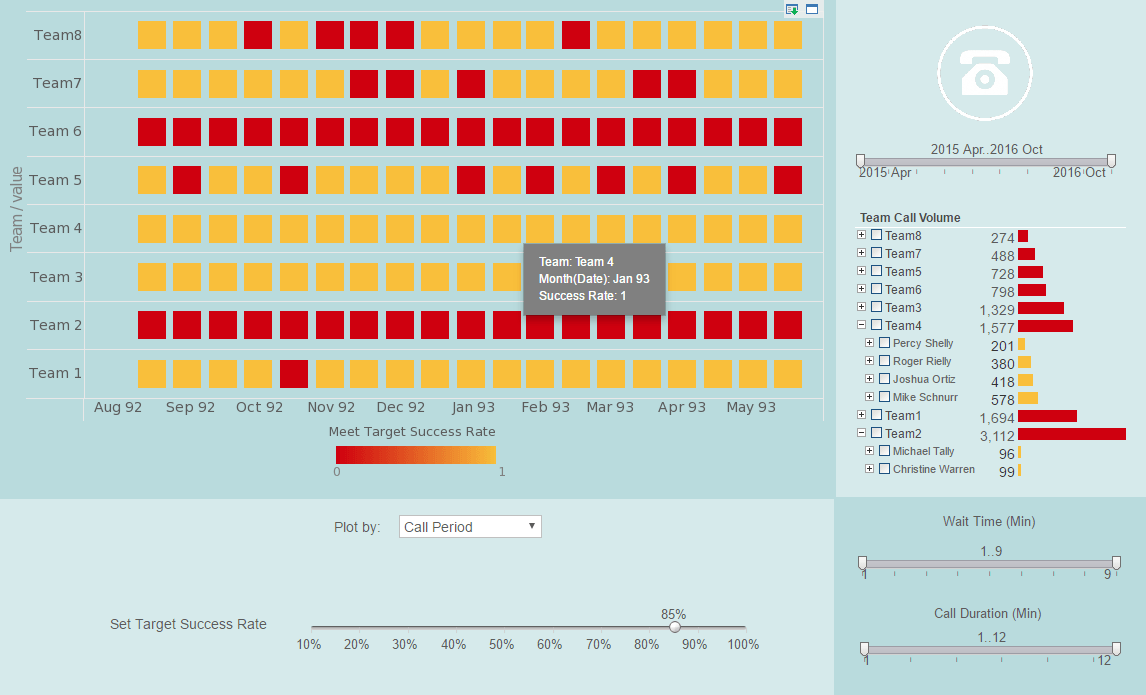Applying Machine Learning to Improve Customer Service
Below is the continuation of the transcript of a Webinar hosted by InetSoft on the topic of Enabling the Intelligent Enterprise with Machine Learning. The presenter is Abhishek Gupta, Product Manager at InetSoft.
Now let's move on to the next topic in applying machine learning to improve customer service. Twenty percent of companies are already utilizing virtual digital assistants. They interact with employees and with customers in a fast paced manner. If you look to the future, more than two thirds of the organizations are considering implementing such digital assistants over the course of the next two to three years.
I'm going to share one example as well which is support ticket specification. If you look at the common customer service issues and you have a lot of tickets coming in and these issues contain common keywords like bill or payment. They appear often in the support ticket category. If we look to machine learning, they could learn the distinction between these words and between categories, and they can identify the regular patterns.
They can support agents to use their application to automatically categorize tickets and provide a first suggestion so this speeds up the whole process of support. The algorithms give this suggestion for a level of accuracy, and then the machine learning algorithm directly adds words to tickets based on the predictive category for the next agent, and this speeds up this whole support process.
| #1 Ranking: Read how InetSoft was rated #1 for user adoption in G2's user survey-based index | Read More |
Improvement Through Automation
This is an area where we're going to see rapid improvement just like the improvement in cars. It started with no automation and then maybe you had a cruise control and maybe road lane assist and maybe an adaptive cruise control and maybe a navigation system and soon you're on your way to self-diving vehicles.
We're seeing the same trajectory in customer service with ticket classification, ticket routing, how to answer suggestions all the way to complete customer service dialogues. Like the vehicle area we don't have to do it in one giant leap. That maybe happens never. We can do that in concrete steps that provide value for customers in every step of the way.
Let me speak about two other examples here. one from the left hand side of my diagram of driving traditional automation augmentation tasks and one about scenarios that were impossible before. We are excited to be going deeper into finance and financial shared services. We've started out with incoming payment processing, bank transfers or check payments that reach the enterprise, and we trying to figure out who is paying for what here.
How does this match to receivables and how do we reconcile the two. That is a classic example of a transaction in the process in shared service organizations where there's been limited rules based automation before. With machine learning we can find the pattern. We can find the complex multi matches and go all the way in automation or at least automation of all the common cases and thereby help improve client efficiency.
 |
View a 2-minute demonstration of InetSoft's easy, agile, and robust BI software. |
This part of the comprehensive vision for accounts receivable intelligence and being flanked by similar ideas and initiatives in the accounts payable space where it all starts with an invoice document hitting the enterprise from the outside as a paper document to be scanned as a PDF or it is received as an e-mail. Then it proceeds through their invoice record to pay processes. All these end–to-end processes are perfect use cases for machine learning to reimagine business processes with digital intelligence.
Accounts receivable intelligence refers to the use of data analytics and business intelligence techniques to gain insights into an organization's accounts receivable processes and performance. By leveraging advanced analytics, organizations can analyze historical AR data, identify patterns, trends, and anomalies, and extract actionable insights to optimize their cash flow management, minimize credit risk, and improve overall financial performance. Accounts receivable intelligence encompasses a range of analytical techniques, including trend analysis, predictive modeling, and customer segmentation, to provide a comprehensive understanding of AR-related metrics and behaviors.
One key aspect of accounts receivable intelligence is the ability to forecast and predict future cash flows based on historical AR data and external factors such as market conditions, customer behavior, and economic indicators. By using predictive analytics algorithms, organizations can anticipate cash inflows and outflows, identify potential cash flow gaps or liquidity risks, and take proactive measures to mitigate them. Additionally, predictive modeling can help optimize credit policies and collection strategies by predicting customer payment behavior and prioritizing collections efforts based on the likelihood of payment.
Moreover, accounts receivable intelligence enables organizations to improve the efficiency and effectiveness of their AR processes through automation and optimization. By analyzing AR performance metrics such as DSO (Days Sales Outstanding), aging balances, and collection rates, organizations can identify bottlenecks, inefficiencies, and areas for improvement in their AR workflows. Armed with this intelligence, organizations can implement process improvements, automate routine tasks, and streamline collections efforts to accelerate cash inflows, reduce delinquencies, and enhance overall AR management. In essence, accounts receivable intelligence empowers organizations to leverage data-driven insights to optimize their AR processes, enhance cash flow visibility, and drive financial performance.
| Previous: Large Suite of Web Based Machine Intelligence Products |


